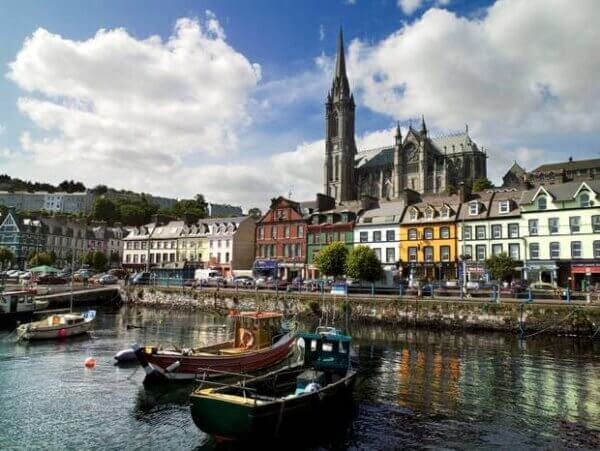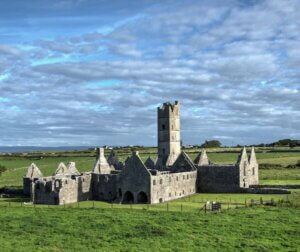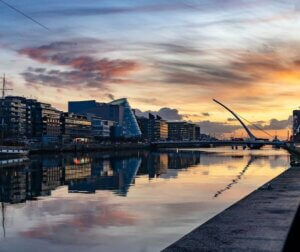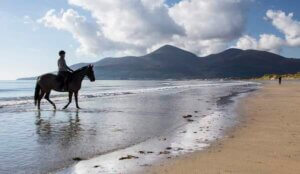Ireland is rich in history, but some towns and communities seem to be more historical than others.
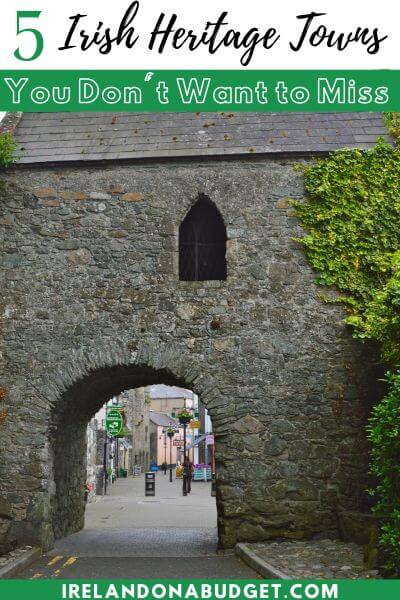 This blog post contains affiliate links, and I may earn compensation when you click on the links at no additional cost to you.
This blog post contains affiliate links, and I may earn compensation when you click on the links at no additional cost to you.
The next time you’re in the Emerald Isle, why not check out these 5 heritage towns, four of which are officially recognized as such by Ireland’s Heritage Council.
The official list includes Birr, Cashel, Cobh, Dalkey, Kells, Killaloe/Ballina, Kilrush, Kinsale, Lismore, Listowel, Roscrea, Tipperary, Trim, Westport, and Youghal.
Visiting the beautiful towns listed below won’t break your budget, either, with adult admission to most of these attractions costing less than €20.
1. Carlingford, Co. Louth
It’s hard to imagine why Carlingford isn’t part of the current crop of 15.
The town is rich in heritage, with many local attractions to enjoy and some of the finest examples of medieval architecture in the country.
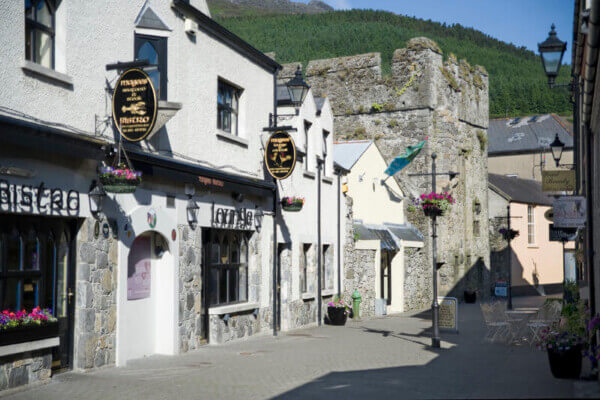
It is located on the shores of Carlingford Lough, with Slieve (pronounced “Schleeve”) Foy in the background.
It is the main town on what is known as the Cooley Peninsula, approximately 90 kilometers (55 miles) from Dublin and only 11 kilometers (6 miles) from the border with Northern Ireland.
It is about a 1-hour drive (approximately 50 miles/80 km) from Carlingford to Belfast.
The town’s main heritage sites include King John’s Castle, The Mint, and Taafe’s Castle.
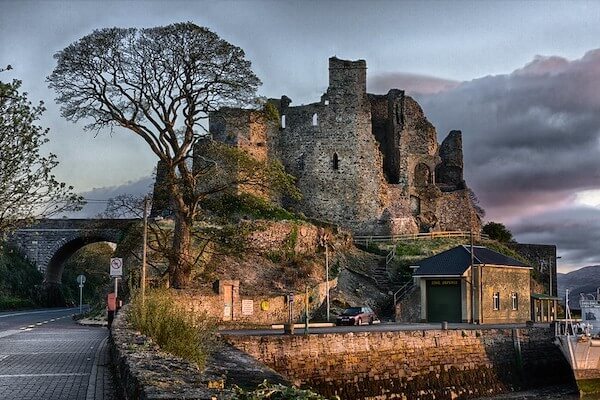
King John’s Castle was built by Hugh de Lacy, an Anglo-Norman landholder and royal office-holder.
King John of England visited the castle in 1200.
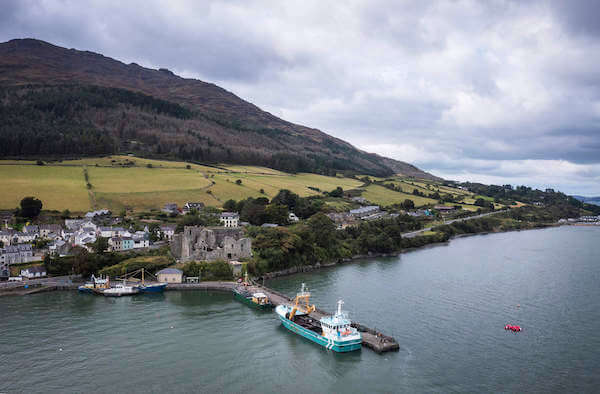
The original building consisted of an enclosed courtyard along with two rectangular towers at the entrance and two-story buildings inside.
A great hall and other rooms were added around 1261.
The Mint is the smallest of the town’s medieval structures.
Researchers believe it got its name from a license that was given to Carlingford to mint coinage. There is no evidence, however, that coins were made there.
Also, of interest is The Thosel, a 15th-century building that is attached to the last remains of the town’s four town gates.
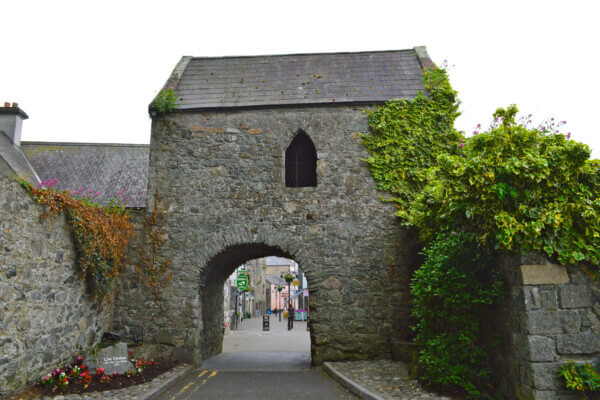
It is similar to other such buildings around Ireland that functioned as town halls, guild halls, courthouses, and even prisons.
Historians believe Carlingford’s Thosel was used as a toll gate on goods coming into the prosperous medieval town, best known for its oysters.
Travel Around Ireland with an E-Sim from Airalo
2. Birr, Co. Offaly
Beautiful tree-lined malls and avenues of elegant Georgian buildings make Birr a popular tourist attraction and one of Ireland's 5 heritage towns worth visiting.
The town, which is located in Ireland's Midlands region, was built around Birr Castle.
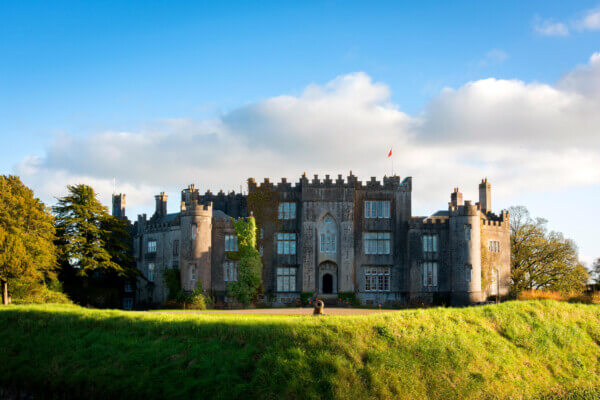
Prior to the construction of the 850-year-old building, the Normans had built a much smaller castle, known as the “Black Castle,” which fell into the hands of the O’Carroll family between the 14th and 17th centuries.
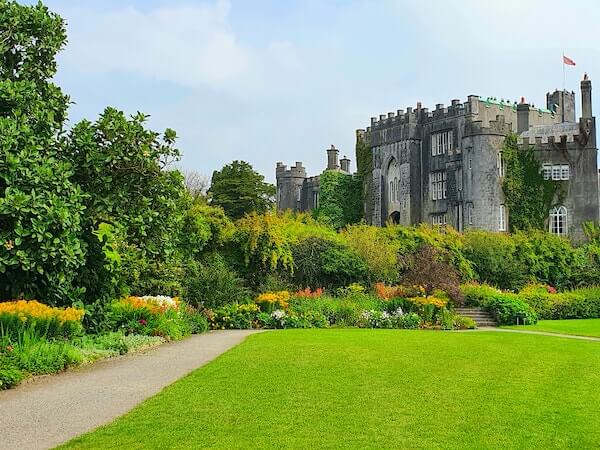
When the last member of the O’Carroll family died, King James, I gave the castle to the Parsons (the Earls of Rosse), who are the current occupants of Birr Castle.
Rather than occupying the O’Carroll’s old tower house, the Parsons decided to turn the Norman gate tower into their “English House,” building a structure on either side of it to create what can be seen today.
Interestingly, during the heatwave of 2018, the outline of the Black Castle was discovered in the scorched grass.
Many renovations have taken place over the years to create what is now a fascinating piece of history.
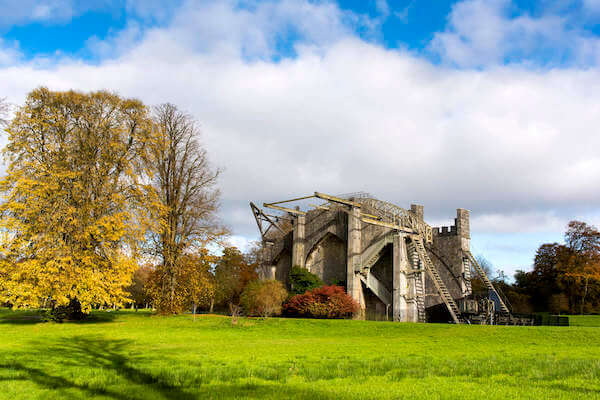
On the grounds of the castle, you’ll find the Great Telescope, known as the “Leviathan,” which was once the largest telescope in the world.
The Science Centre, nearby, tells the story of how the telescope was built by the local people of Birr, under the watchful eye of the Third Earl of Rosse in the early 1840s.
The gardens contain a number of rare plants that family members brought back to Ireland during their travels abroad, in addition to the largest box hedges in the country.
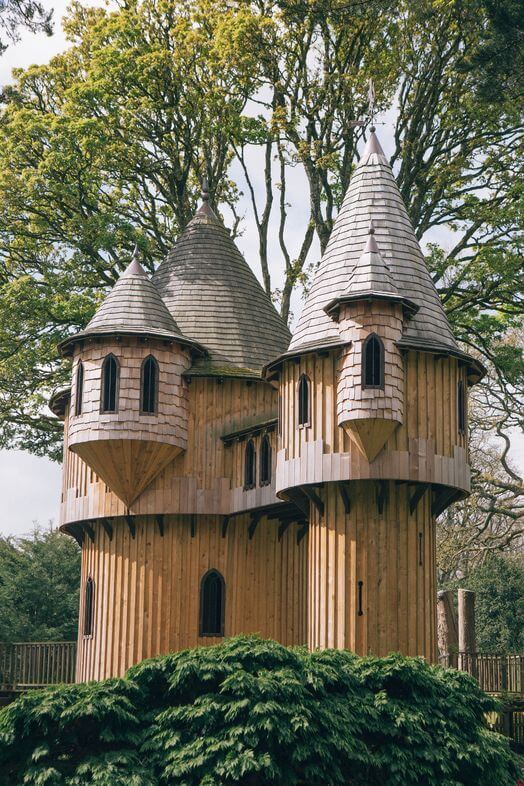
A treehouse on the grounds, the largest in Ireland, is a great place for kids to explore.
The playground is open from 9 a.m. to 4:30 p.m. throughout the year. During the summer months, it is open until 5 p.m.
From May 17th rough Sept. 9th, the Parsons invite the public to take tours of their home.
The 45-minute guided tours include access to the main reception rooms, where you’ll see the family’s beautiful antiques, tapestries, and other furnishings, as well as admission to the Science Centre, the Great Telescope, and the gardens.

Children under 12 are not allowed on the tours, which take place Monday through Saturday at 10 a.m., 11:30 a.m., and 1 p.m.
Guided castle tours can be pre-booked by emailing [email protected]. Tickets are €20 per person.
The gardens and Science Centre at Birr Castle are open throughout the year.
Admission for a family of four is €25 (this excludes admission to the house during the summer, as mentioned above).
An adult ticket is €9, admission for children aged 5-16 is €5, students (aged 17 and up) is €7.50, and seniors over 65 is also €7.50.
Ireland Bed & Breakfast Plus Dublin Tour: $1,180 per person (air, breakfast, hotel & car)
3. Roscrea, Co. Tipperary
There’s plenty to see in this market town of about 5,500, including the 13th-century Roscrea Castle and adjoining Damer House.
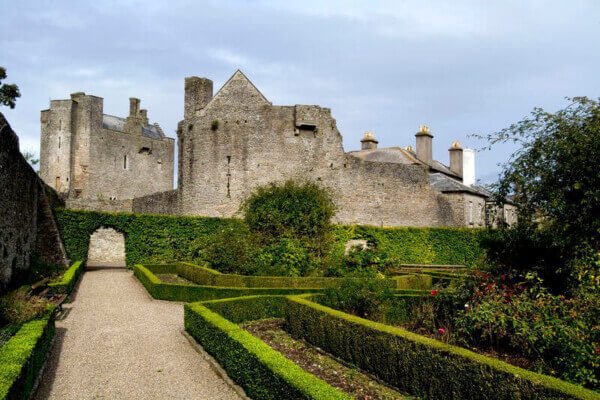
Other heritage sites include the Round Tower, a Franciscan friary, as well as a couple of abbeys.
Roscrea Castle
The 13th-century castle, which is in the heart of the town, is sometimes referred to as St. John’s Castle, attributed to King John of England, who approved its construction.
It consists of a walled courtyard, gate block, and angled towers.
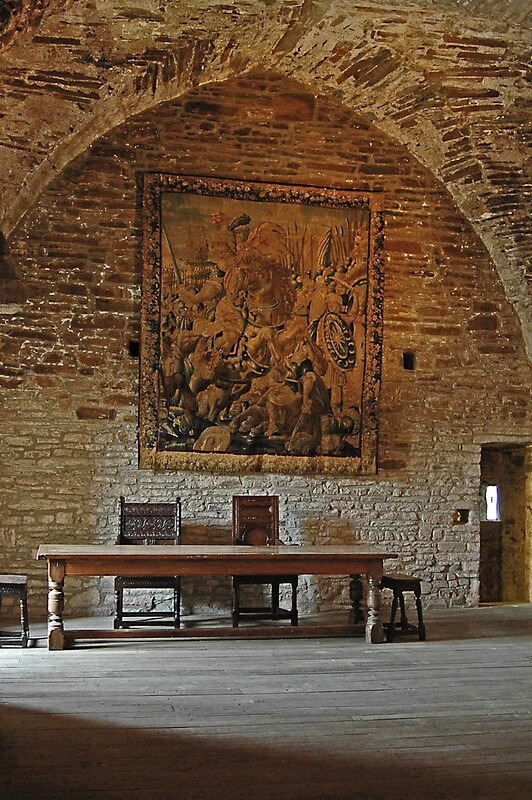
The Damer House
In 1728, local merchant John Damer built a large Georgian house on the grounds of the castle.
The house is a good example of a pre-Palladian Queen Anne-style mansion.
The building remained in the hands of the Damer family until 1798. During the 20th century, it was used as an army barracks, a school, a tuberculosis sanatorium, and a library.
The Roscrea Heritage Centre took it over in the 1990s and began much-needed restoration.
It is normally open for guided tours from March 28 through Sept. 25, (10 a.m. to 6 p.m.). However, work is currently being done at the site and no opening date for 2023 has been published. Email [email protected] for more information.
Admission is as follows: adults, €5; children and students €3; seniors €4 and families €13.
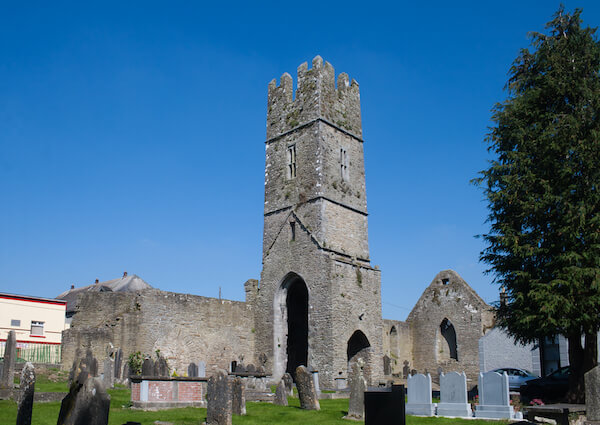
The Roscrea Francisan Friary
The Franciscan friary in Roscrea is one of Ireland’s National Monuments, which includes a house, dormitory, prior’s chamber, a chapel, cemetery, garden, and orchards.
The friary was founded by the Franciscan order in the 14th century and was destroyed by the British around 1577.
One Franciscan, Fr. Thady O’Day, escaped the British but was later hanged in Limerick. In the years following, it fell into disrepair.
Today, its remains are incorporated into a Roman Catholic church.
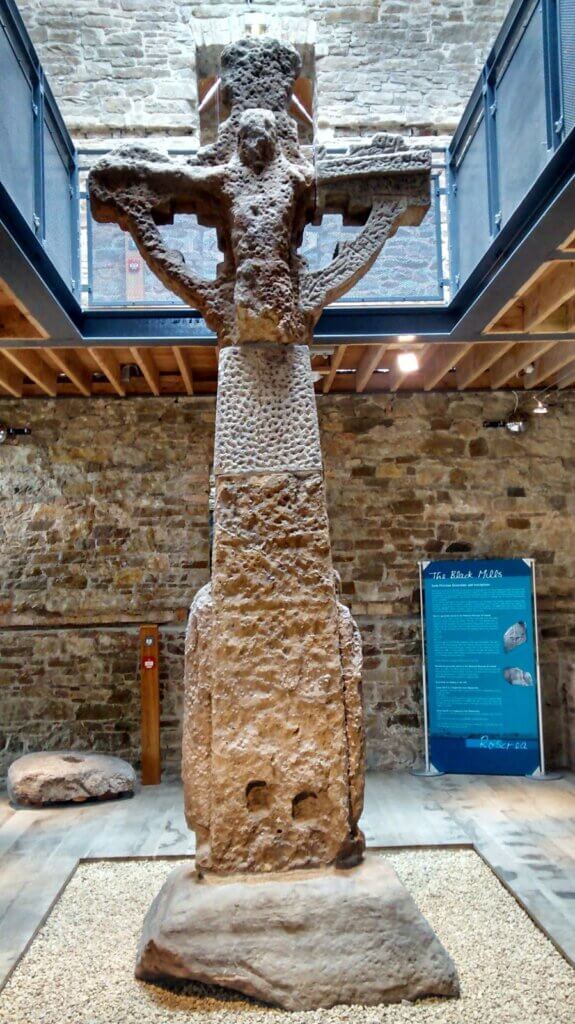
The Black Mills
St. Cronan’s High Cross, which once stood in the graveyard of St. Cronan’s Church, is now housed at the Black Mills on Roscrea’s Church Street.
The cross, which is almost 10 feet tall (3 meters), is a fascinating piece of history that includes two 12th-century crosses mounted together and featuring different religious scenes, including the crucifixion of Jesus.
The Black Mills is open every day from 10 a.m. to 5 p.m. until the end of October. Tickets for Roscrea Castle and the Damer House also cover admission to the Mills.
Roscrea’s 12th-century round tower is a formidable presence in the town, part of an old monastic complex founded by St. Cronan, who died in the 7th century.
5. Westport
Situated in the heart of Co. Mayo near Clew Bay, Westport is one of the few planned towns in Ireland.
Architect James Wyatt created the plans for the town, which was commissioned in the 1780s by John Browne, the owner of nearby Westport House.
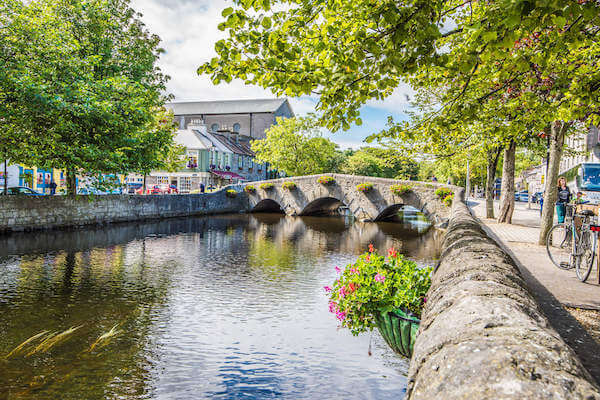
The Georgian architectural style can be seen in Westport’s elegant tree-lined boulevard, known as The Mall, and built on the Carrowbeg River.
The Clew Bay Heritage Centre, located in the town, tells the story of Westport through artifacts, photographs, and documents.
Some of the displays at the center include information on the port of Westport, the local railway, the 1798 rebellion in Westport, and much, much more.
Guided walks of the town are provided by the Westport Historical Society and leave from the town clock (at the top of Bridge Street) at 11 a.m. every Wednesday morning during the months of July and August.
To book your place on the walk, go to the center, which is located on The Quay.
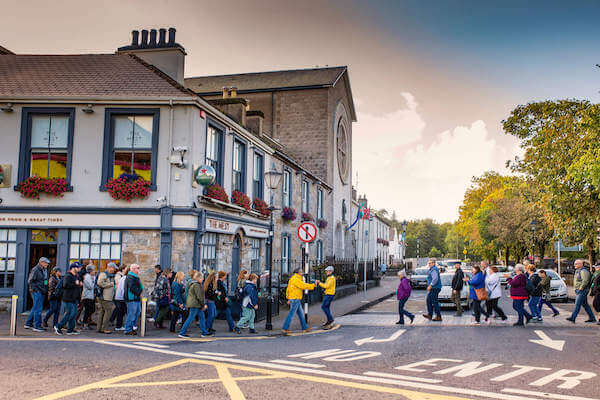
Alternatively, you could book a walking tour, pub tour or food tour with the popular Westport Walking Tours.
Westport House
The main attraction in Westport is Westport House, which was designed by Wyatt and Richard Cassels.
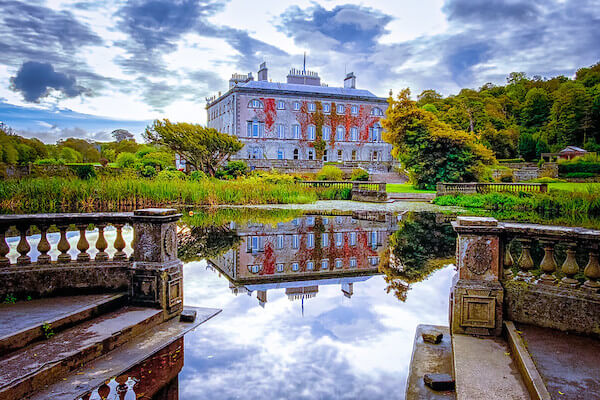
While the house is now under new management, the stately home was, for generations, owned by the Browne family, who were descendants of wealthy slave plantation owners in Jamaica.
The family was also related to Howe Peter Browne, the 2nd Marquess of Sligo, and his wife, Lady Sligo (Hester Catherine De Burgh), as well as the 16th-century pirate, Grace O’Malley, known in Gaelic as Grainne Mhaol (pronounced “Grawnya Whale”).
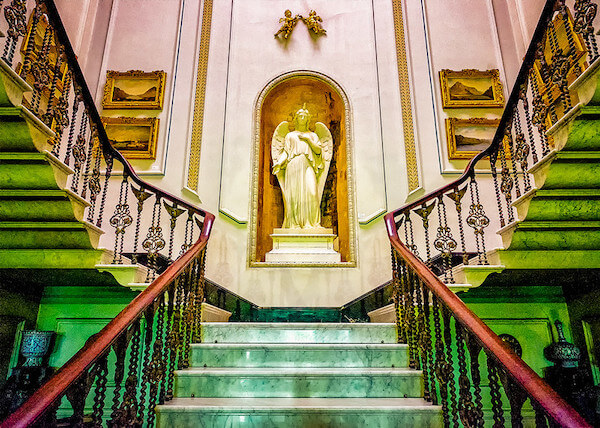
The house includes a front hall with a vaulted ceiling and a Sicilian marble staircase, Waterford cut-glass chandeliers, marble open fireplaces, bog oak furnishings, a collection of family portraits, and local landscapes, as well as other fine features.
Enjoy a sumptuous Victorian afternoon tea served by your own Victorian maid in the drawing-room when you visit.
The grounds include a Pirate Adventure Park, a Birds of Prey Centre, and gardens to explore.
Experience Westport House and Gardens
The nearby Croagh Patrick, considered Ireland’s holy mountain, is also a popular attraction. It is believed that St. Patrick, Ireland’s patron saint, fasted at the top of the mountain for 40 days in 441 AD.
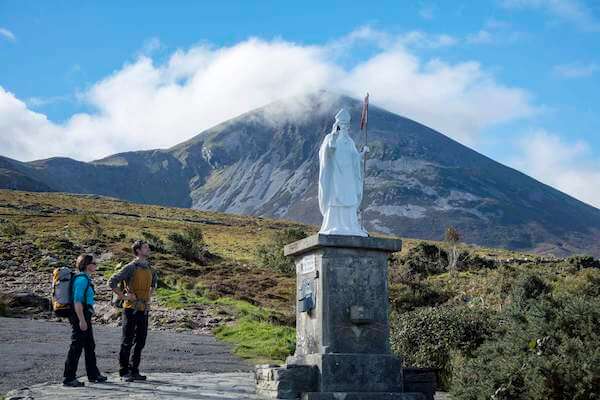
As a result, it is a popular pilgrimage spot.
On the last Sunday of July each year, over 25,000 pilgrims climb what is known throughout the West of Ireland as “The Reek.”
At the top, there is a church, where mass is celebrated, and confessions are heard.
The Clew Bay Archaeological Trail, which starts in Westport, is a fascinating look into the area’s history and heritage.
The trail takes visitors through Murrisk, Louisburgh, and Clare Island.
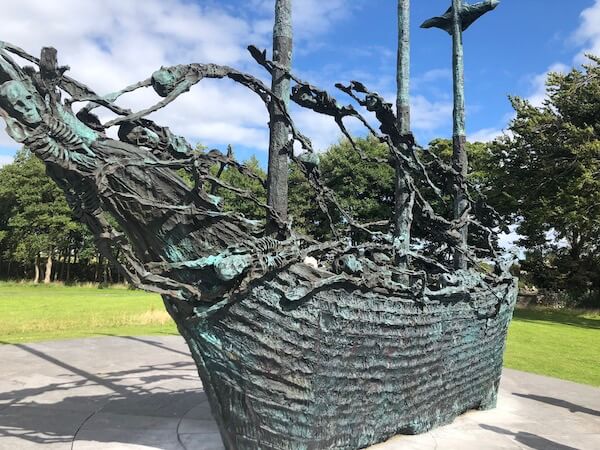
Some of the notable sites along the trail include the Carrownalurgan Ringfort, Murrisk Abbey and the National Famine Monument, the Granuaile Centre and Famine Museum in Louisburgh, and the Clare Island Tower House, among others.
6. Cobh, Co. Cork
This southerly town, formerly known as Queenstown (from 1849-1920), is best known as the departure point for millions of emigrants who left Ireland from the 17th through mid-20th centuries.
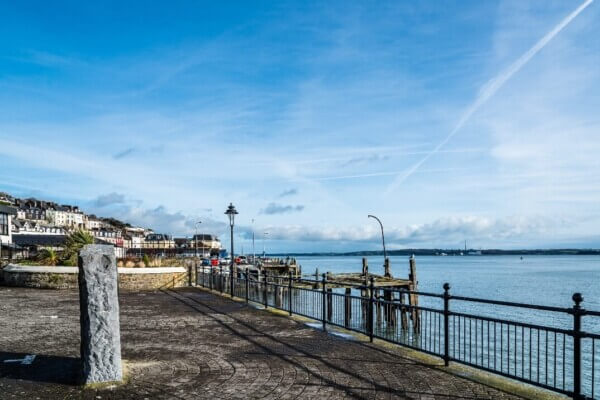
It is also where the ill-fated Titanic docked before making the last leg of its journey to New York on April 11, 1912.
The town’s Heritage Centre houses an exhibition called the Emigration and Maritime Story, which has become an integral part of Cobh’s history and legacy.
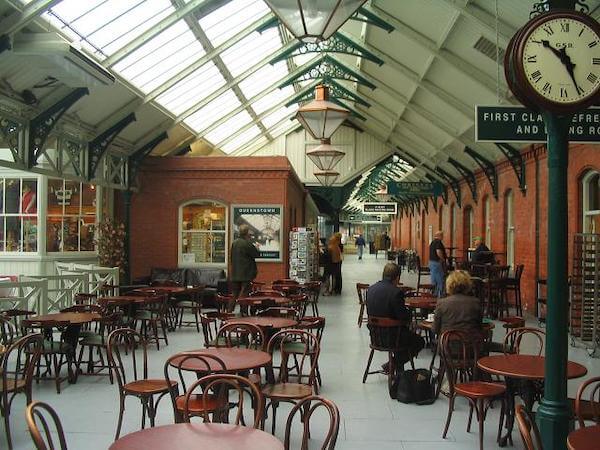
The exhibition, which is housed in a beautifully restored Victorian railway station, retraces the emigration of the Irish people who left from Cobh on coffin ships, early steamers, and on ocean liners.
You’ll learn about the conditions they faced on the coffin ships and on the convict ships that left from Cobh for Australia at the beginning of the 19th century, as well as the untold stories of earlier emigrants who were sent to the West Indies during the Cromwellian period of the 17th century.
Learn About Your Family History: Sign up for Ancestry.com
A good deal of the exhibition recalls the story of the Titanic, which sank in the North Atlantic, and also the sinking of the Lusitania off Cork Harbor with the loss of more than a thousand lives.
Tickets for the Queenstown story are €13.50 for adults; €11 for seniors and students; €9 for children ages 13-18; €7 for children ages 6-12, and €34 for families of up to 4.
At the Cobh Museum, you will also learn about the history of Cobh, in particular, its importance as a harbor and its location as a British naval base.
The seaside town was of tactical importance to the British during the Napoleonic Wars, with many of Cobh’s present-day buildings constructed during this boom time.
The town was also known as a health resort because of its temperate climate.
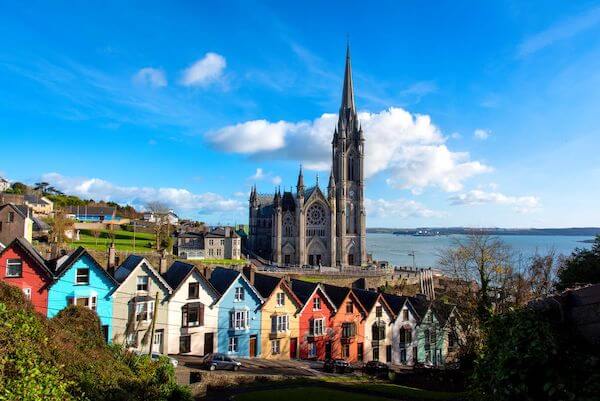
In 1915 when the Lusitania was torpedoed off the coast, the people of Cobh came to the rescue, caring for and ultimately burying the dead.
The Old Church cemetery in the town became the final resting place for 169 of those killed on the ship.
While in Cobh, be sure to take the Cobh Cultural Tour, which includes the Titanic Trail guided walking tour.
Are you planning to visit these 5 heritage towns? Let me know in the comments below.

